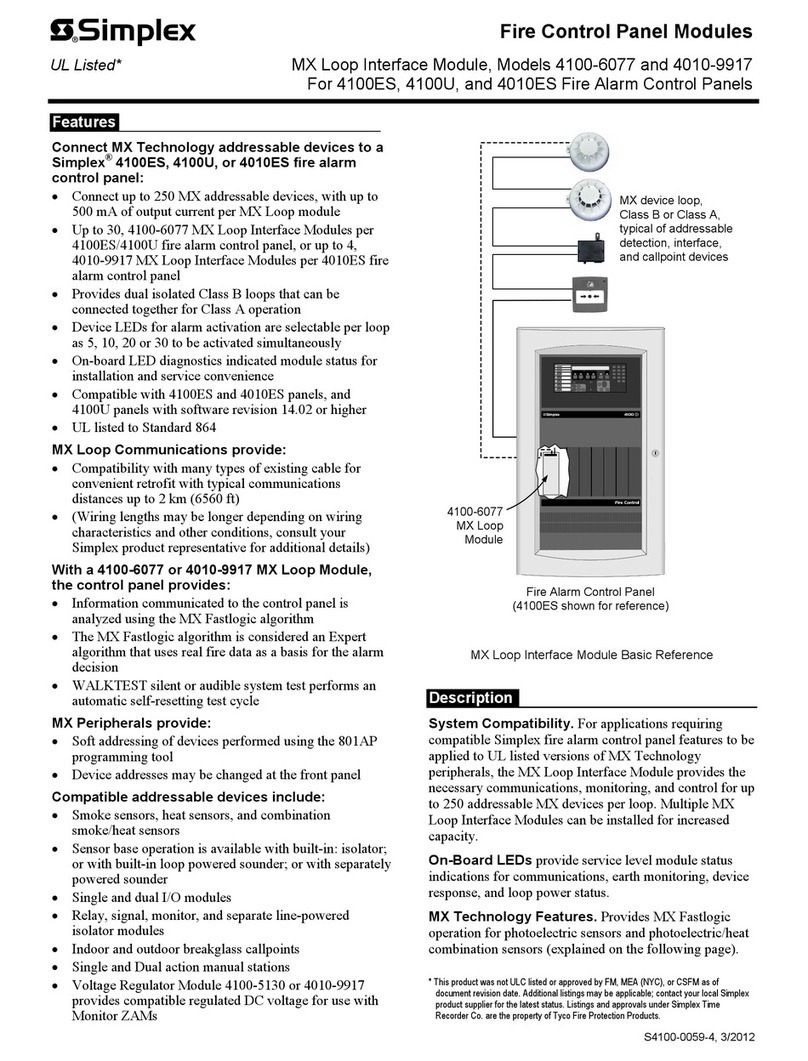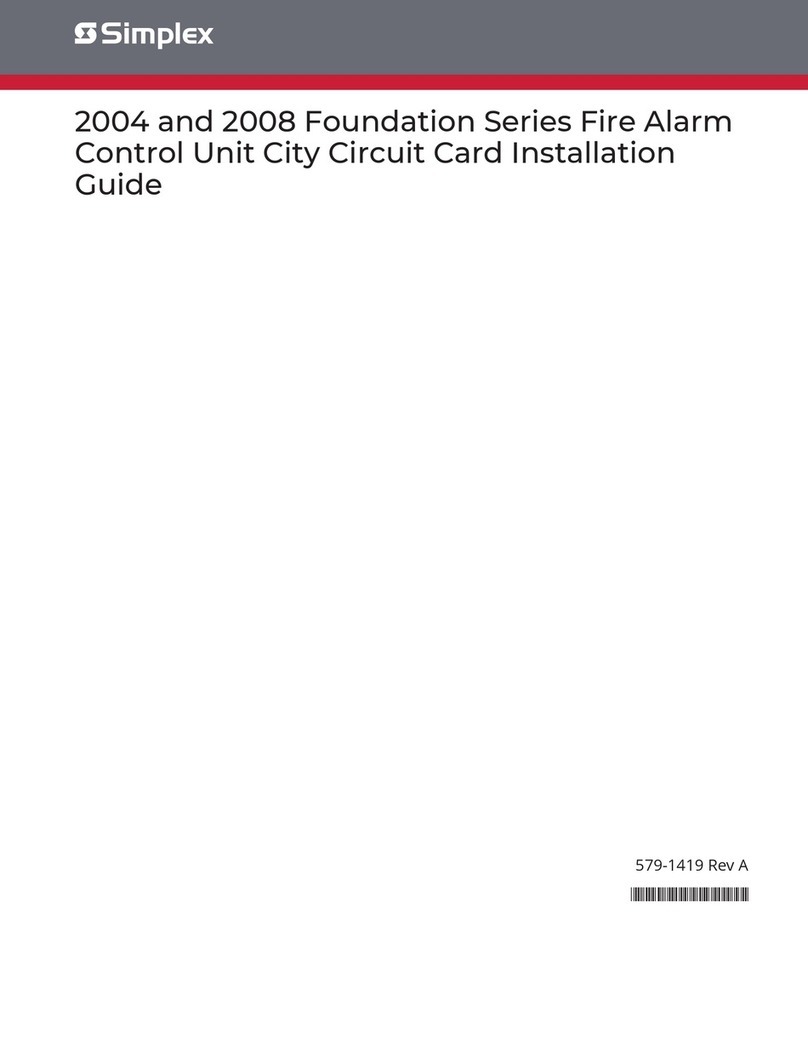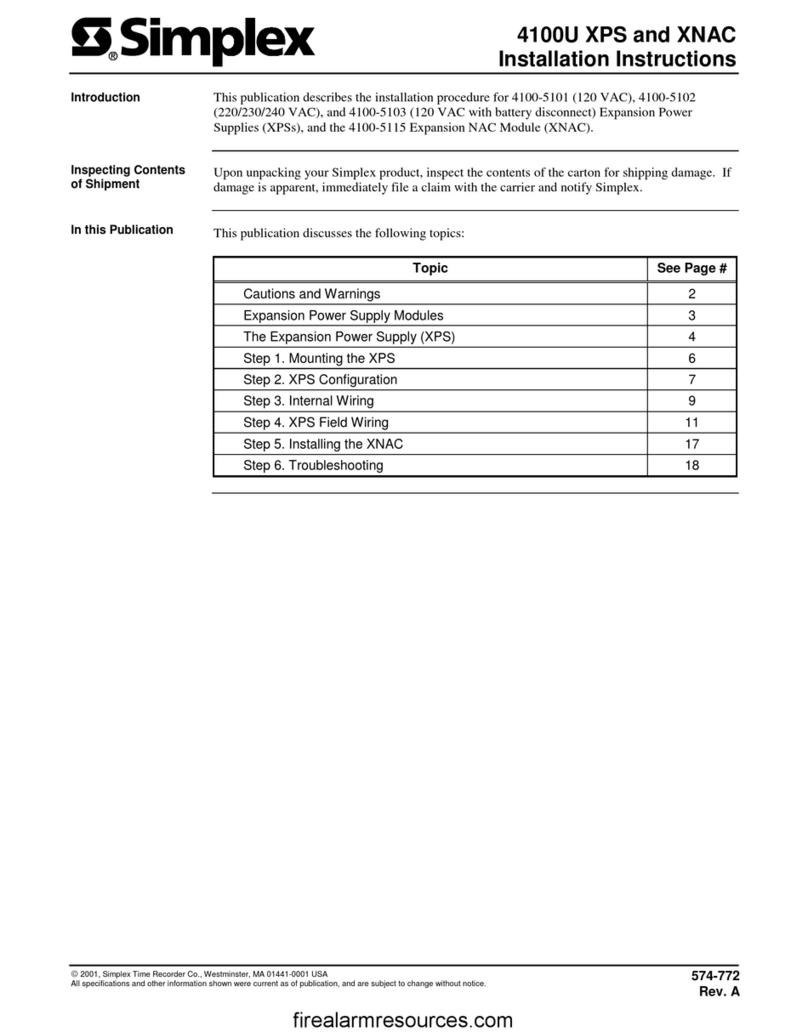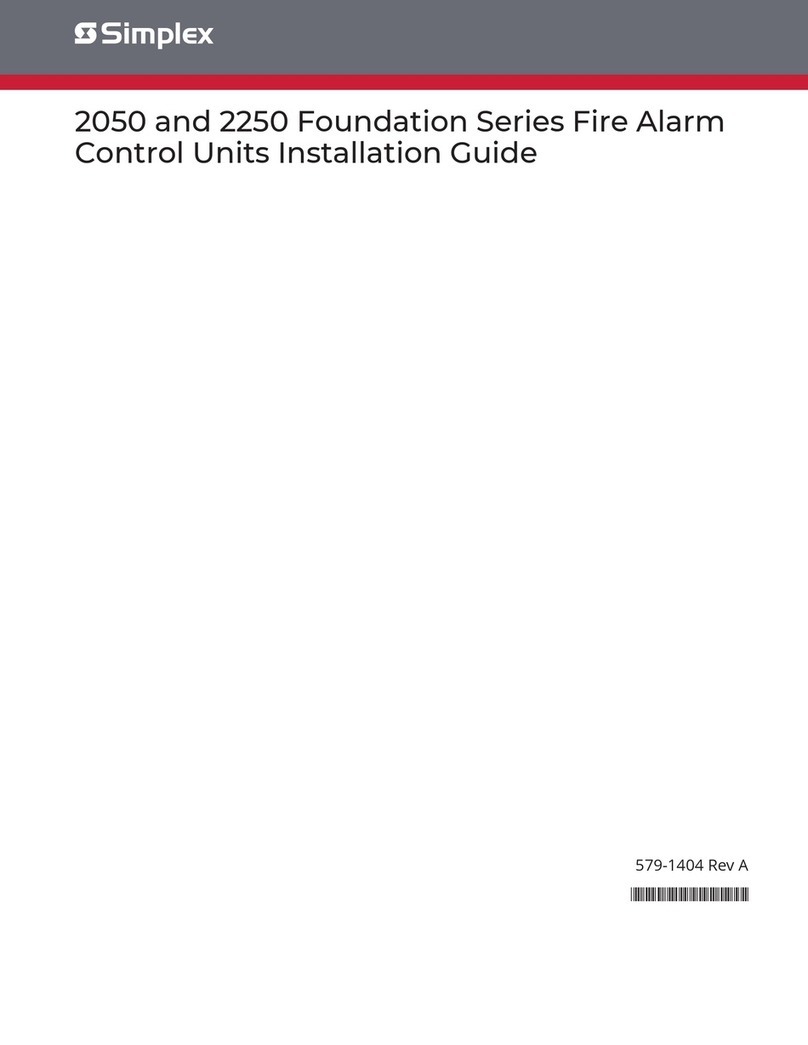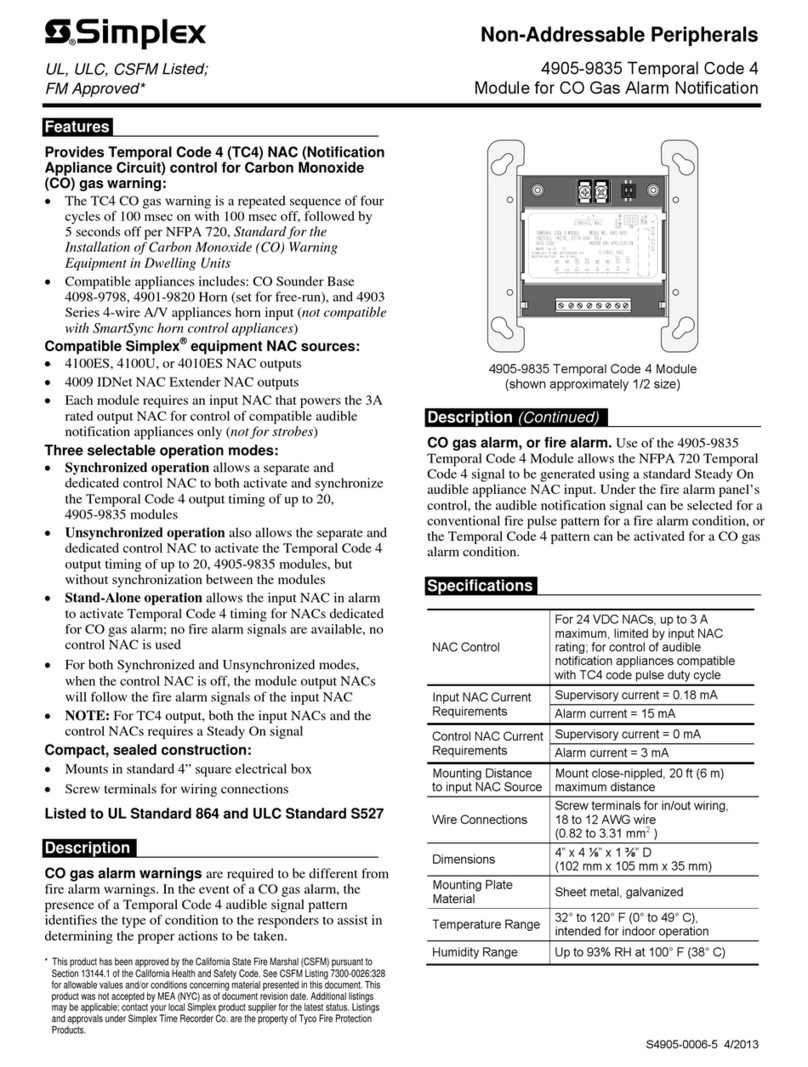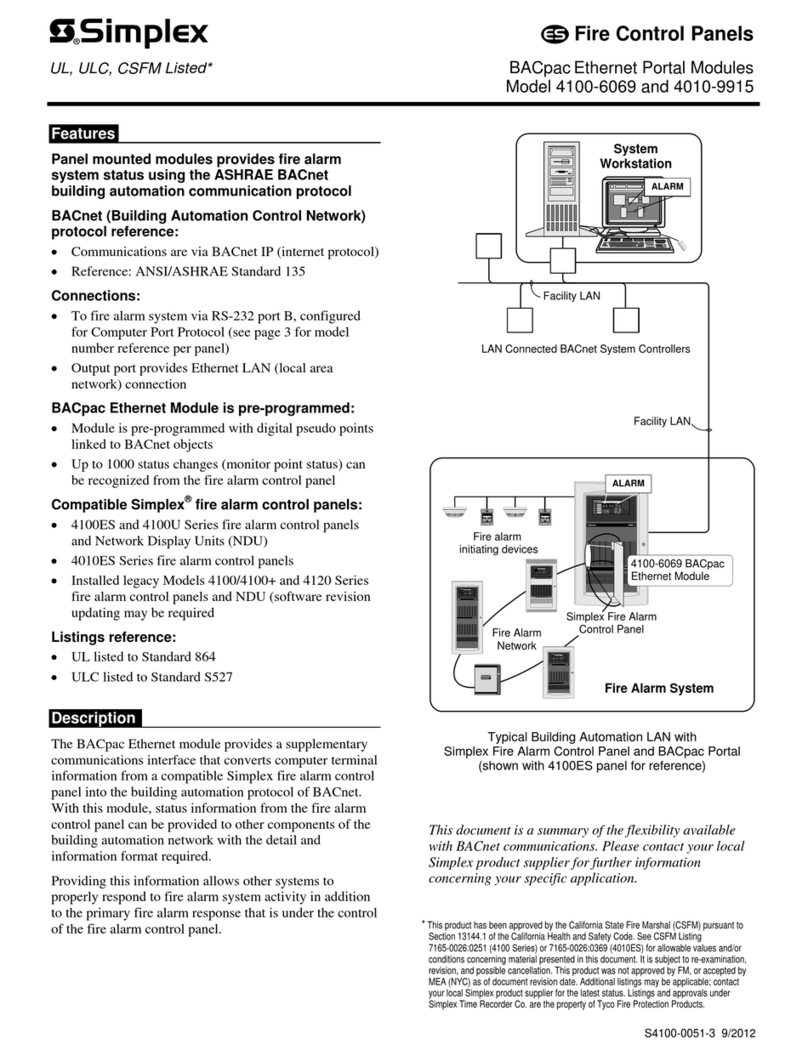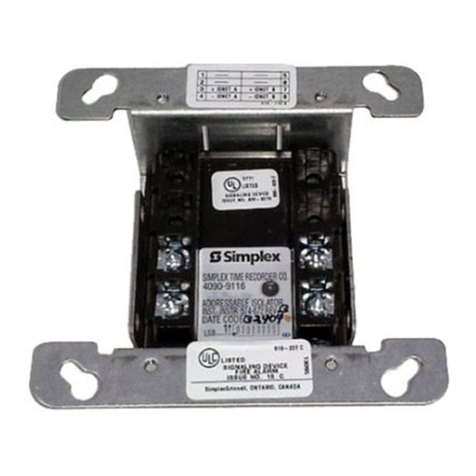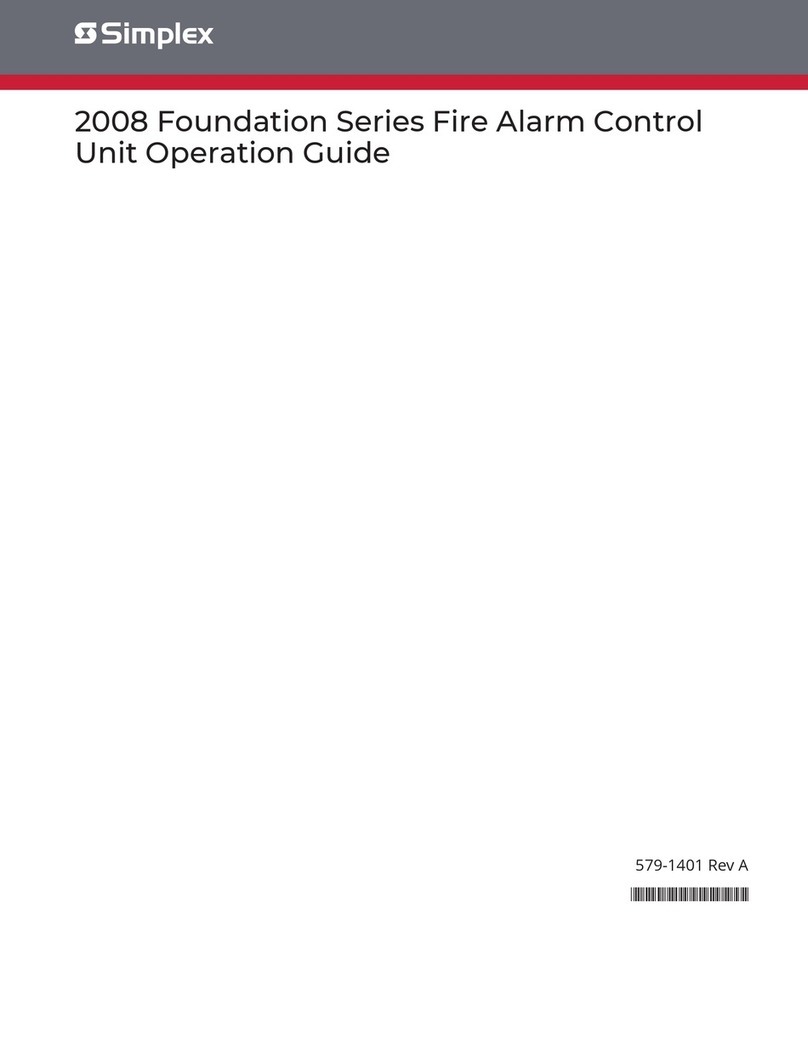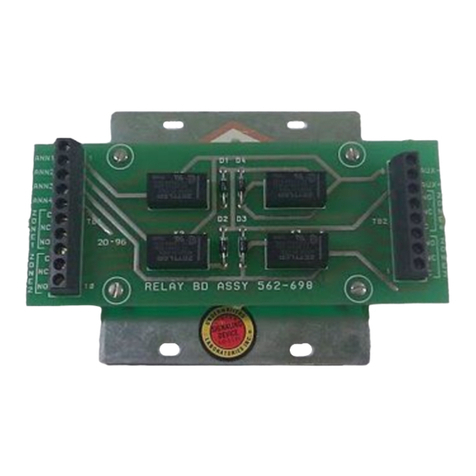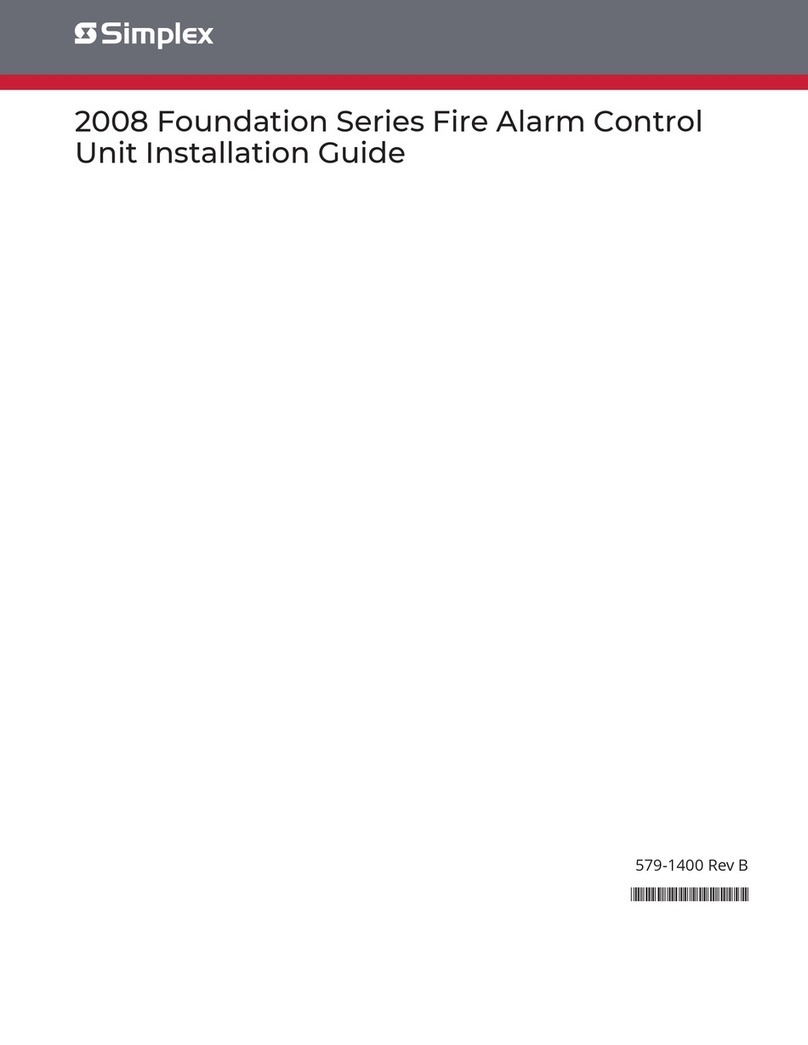
Cautions, warnings, and regulatory information
READ AND SAVE THESE INSTRUCTIONS Follow the instructions in this installation manual. These instructions must be followed to avoid damage to
this product and associated equipment. Product operation and reliability depend upon proper installation.
DO NOT INSTALL ANY SIMPLEX™ PRODUCT THAT APPEARS DAMAGED Upon unpacking your Simplex product, inspect the contents
of the carton for shipping damage. If damage is apparent, immediately file a claim with the carrier and notify an authorized Simplex
product supplier.
ELECTRICAL HAZARD Disconnect electrical field power when making any internal adjustments or repairs. All repairs should be
performed by a representative or an authorized agent of your local Simplex product supplier.
STATIC HAZARD Static electricity can damage components. Handle as follows:
• Ground yourself before opening or installing components.
• Prior to installation, keep components wrapped in anti-static material at all times.
EYE SAFETY HAZARD Under certain fibreoptic application conditions, the optical output of this device may exceed eye safety limits. Do
not use magnification (such as a microscope or other focusing equipment) when viewing the output of this device.
FCC RULES AND REGULATIONS – PART 15. This equipment has been tested and found to comply with the limits for a Class A digital device,
pursuant to Part 15 of the FCC Rules. These limits are designed to provide reasonable protection against harmful interference when the equipment
is operated in a commercial environment. This equipment generates, uses, and can radiate radio frequency energy and, if not installed and used in
accordance with the instruction manual, may cause harmful interference to radio communications. Operation of this equipment in a residential area is
likely to cause harmful interference in which case the user will be required to correct the interference at his own expense.
SYSTEM REACCEPTANCE TEST AFTER SOFTWARE CHANGES To ensure proper system operation, this product must be tested in accordance with
NFPA72 after any programming operation or change in site-specific software. Reacceptance testing is required after any change, addition or deletion
of system components, or after any modification, repair or adjustment to system hardware or wiring.
All components, circuits, system operations, or software functions known to be affected by a change must be 100% tested. In addition, to ensure that
other operations are not inadvertently affected, at least 10% of initiating devices that are not directly affected by the change, up to a maximum of 50
devices, must also be tested and proper system operation verified.
NFPA 72® is a registered trademark of the National Fire Protection Association.
Introduction
This publication describes the installation procedure for the 4100-6014/4120-6014 and 4120-6078 Network Interface Cards (NIC) and the following
media modules:
• 4100-0144/4120-0144 Modem Media Card (non-4100U/4100ES only)
• 4100-6056 Wired Media Card (4100U/4100ES only)
4100-0142/4120-0142 Wired Media Card (non-4100U/4100ES only)
• 4100-6057 Fiber Media Card (4100U/4100ES only)
4100-0143/4120-0143 Fiber Media Card (non-4100U/4100ES only)
• 4100-6301 - 4120 SM-L Duplex Fiber Media Card
4100-6302 - 4120 SM-R Duplex Fiber Media Card
4100-6303 - 4120 MM-L Duplex Fiber Media Card
4100-6304 - 4120 MM-R Duplex Fiber Media Card
Related documentation
• Field Wiring Diagram for 4100 Power Limited (841-731)
• Field Wiring Diagram for 4100 Non Power Limited (841-995)
• 4100ES Fire Alarm System Installation Guide (574-848)
579-182 Rev. V
4100/4120-6014, 4100-6078 NICs and 4100/4120-Series Media Modules Installation Instruction
*0579182V*
